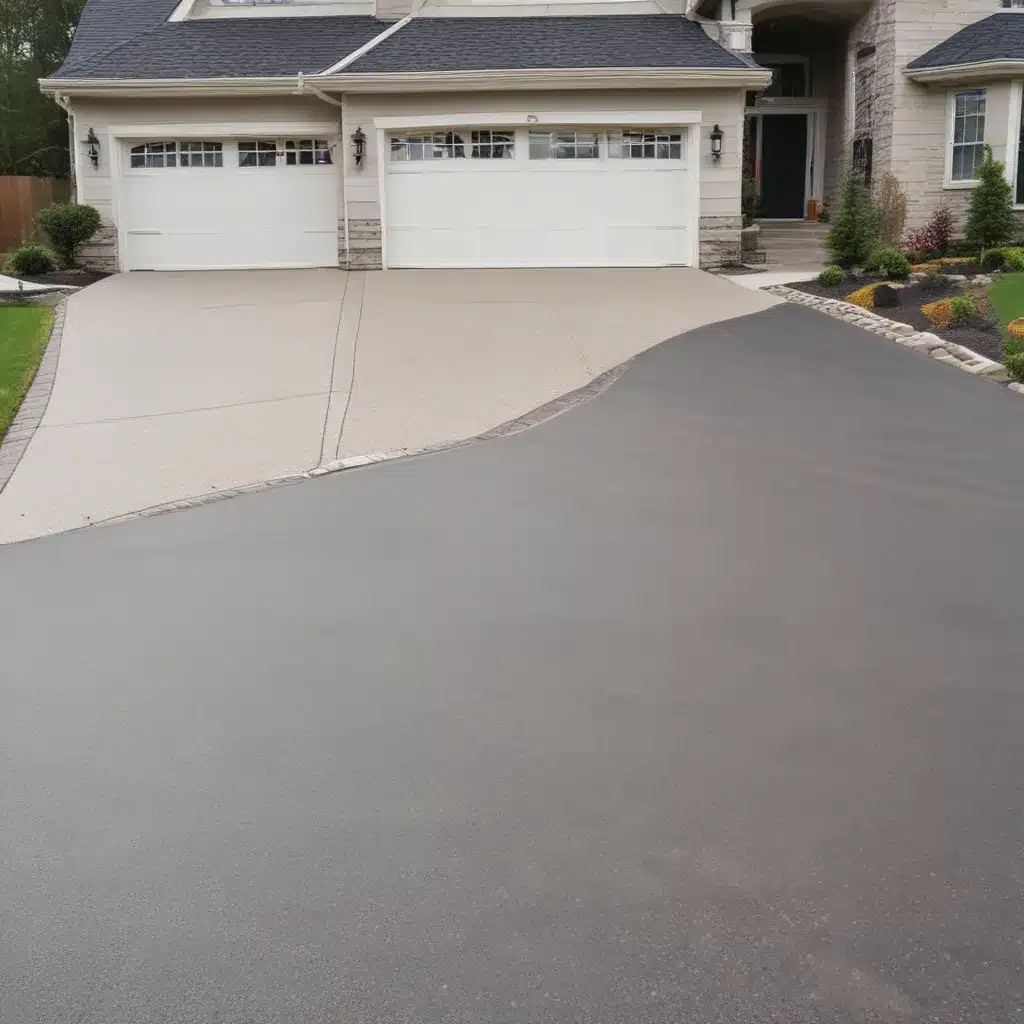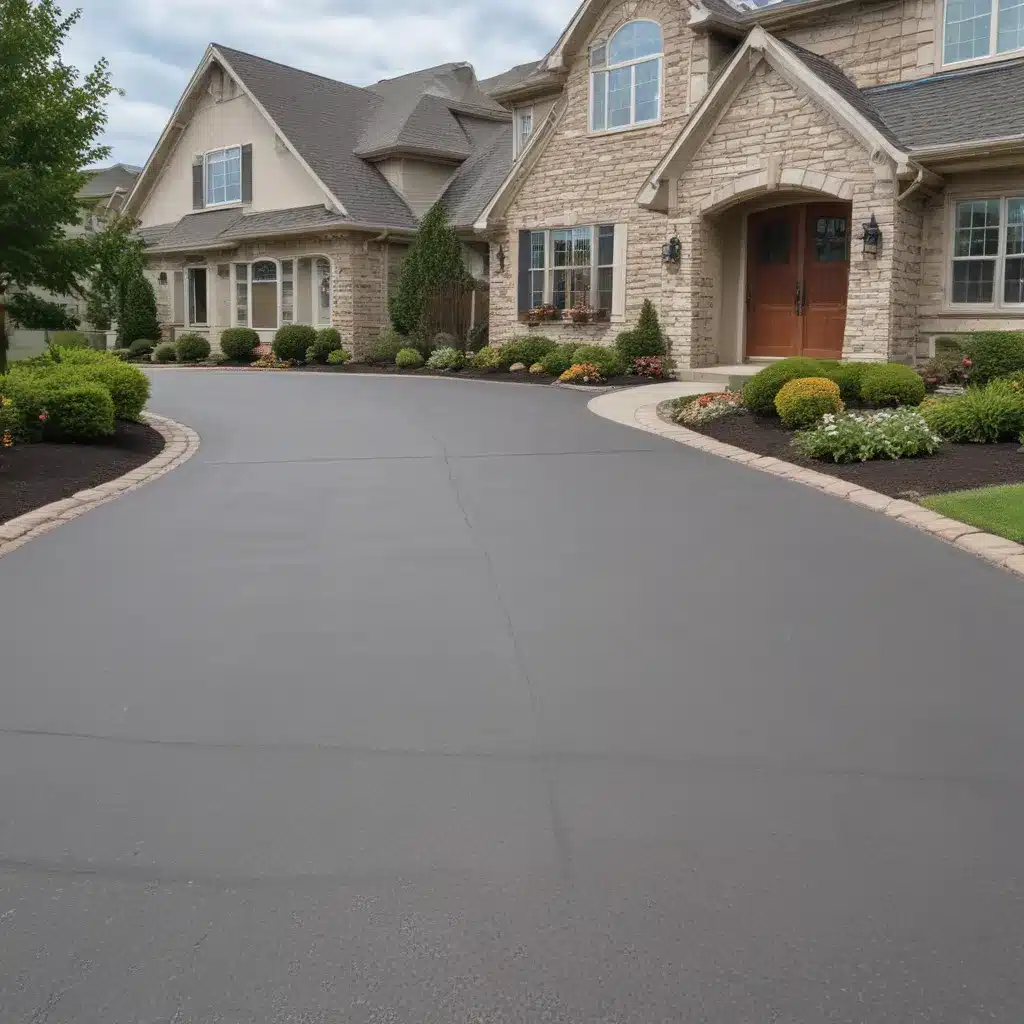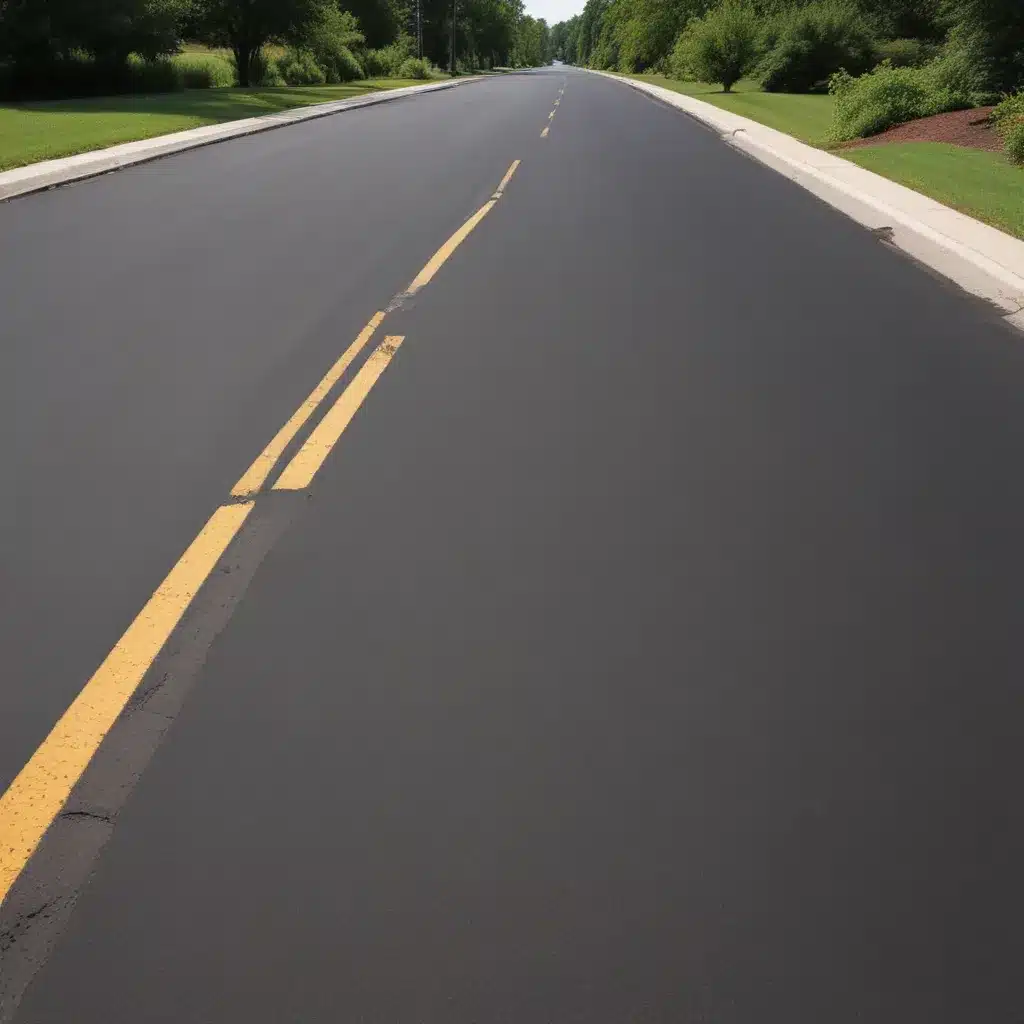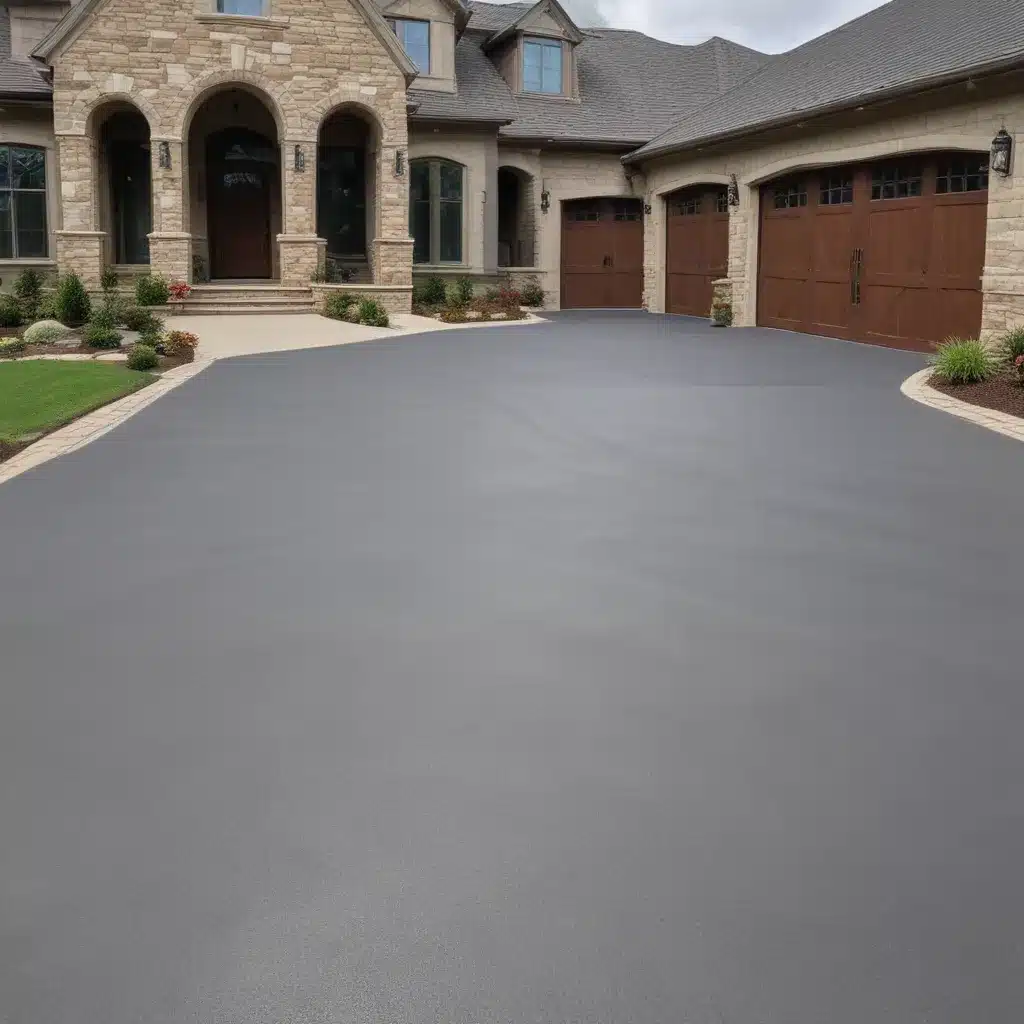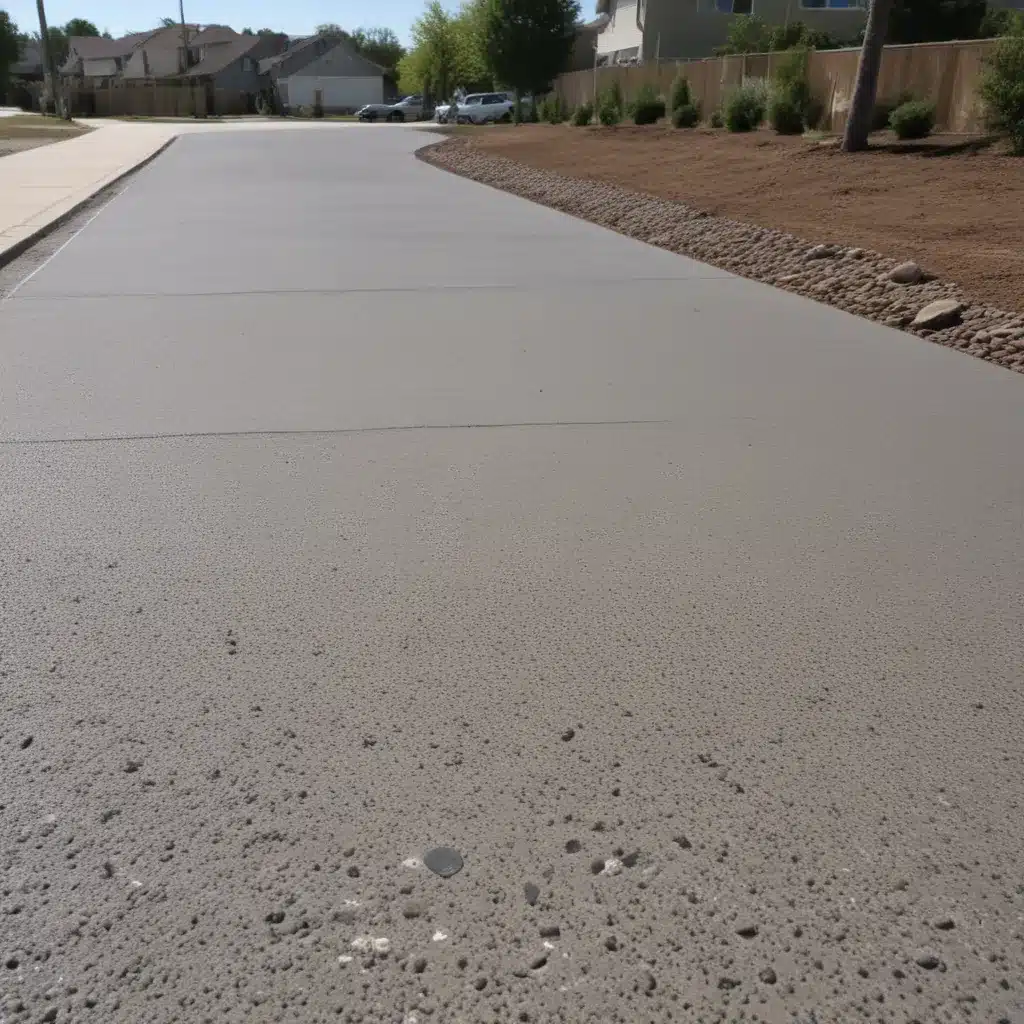Mastering the Art of Drainage: Achieving the Ideal Driveway Slope
As a passionate homeowner, I’ve always been fascinated by the art of driveway design. It’s not just about creating a visually appealing entryway to your property – it’s about engineering a functional, efficient, and long-lasting surface that can withstand the elements and keep your home high and dry. And when it comes to this, one of the most crucial elements to get right is the driveway slope.
You see, the slope of your driveway isn’t just a matter of aesthetics – it’s a critical factor in ensuring proper water runoff and drainage. Get it wrong, and you could be dealing with pooling, flooding, and all sorts of other headaches that can quickly turn your dream driveway into a nightmare. But get it right, and you’ll enjoy a driveway that’s not only easy on the eyes, but also a seamless extension of your home’s overall drainage system.
Understanding the Importance of Driveway Slope
So, why is the driveway slope so important, you ask? Well, let me break it down for you. The slope of your driveway is responsible for directing the flow of water away from your home’s foundation and towards the nearest drainage system, be it a storm drain, a swale, or even a curb. If the slope is too flat, water will have nowhere to go, and you’ll end up with puddles and standing water that can lead to all sorts of problems, from foundation damage to mosquito breeding grounds.
On the flip side, if the slope is too steep, the water will rush off the driveway with such force that it can cause erosion, wash away landscaping, and even put your vehicle’s stability at risk as you navigate the incline. It’s a delicate balance, and getting it just right is the key to a well-designed, functional driveway.
Determining the Ideal Driveway Slope
So, what is the ideal driveway slope, you ask? Well, the answer may surprise you, but there’s no one-size-fits-all solution. The optimal slope for your driveway will depend on a variety of factors, including the climate, the soil type, the local building codes, and the overall layout of your property.
As a general guideline, most experts recommend a driveway slope of between 1% and 2%. This means that for every 100 feet of driveway, the elevation should drop by 1 to 2 feet. This slope is gentle enough to allow for easy and safe vehicle access, while still providing sufficient drainage to prevent pooling and flooding.
Of course, there are exceptions to this rule. In areas with heavy rainfall or steep terrain, a steeper slope of up to 5% may be necessary to ensure proper water runoff. And in flat or low-lying areas, a shallower slope of 0.5% may be required to prevent water from rushing off the driveway too quickly and causing erosion.
Designing the Perfect Driveway Slope
Now that we’ve covered the importance of driveway slope and the general guidelines for achieving the ideal incline, let’s dive into the nitty-gritty of designing the perfect driveway slope for your property.
The first step is to assess the existing conditions of your property. Take a close look at the surrounding landscape, the soil type, and the overall drainage patterns. This will help you determine the best approach for your driveway slope.
Next, you’ll need to consider the local building codes and regulations. Different municipalities and regions may have specific requirements when it comes to driveway slopes, so it’s important to check with your local authorities to ensure that your design is in compliance.
Once you’ve got a clear understanding of the existing conditions and the regulatory requirements, it’s time to start planning your driveway slope. This is where things can get a little technical, but don’t worry – I’ve got your back.
One of the most important factors to consider when designing your driveway slope is the overall length of the driveway. The longer the driveway, the more gradual the slope will need to be to maintain a safe and efficient water runoff. As a general rule, for every 100 feet of driveway, the elevation should drop by 1 to 2 feet.
But that’s not all. You’ll also need to take into account the shape of your driveway, the placement of any curbs or drainage structures, and the overall topography of your property. A curved driveway, for example, may require a slightly steeper slope on the inside of the curve to prevent water from pooling.
And let’s not forget about the materials you choose for your driveway. Different surfaces, such as asphalt, concrete, or pavers, can have different drainage properties and may require adjustments to the slope.
Achieving the Perfect Driveway Slope: Real-World Examples
Now that we’ve covered the theory behind driveway slope design, let’s take a look at some real-world examples of how homeowners have achieved the perfect balance of form and function.
One of my favorite examples is the driveway of my good friend, Sarah. Her property is located in a hilly, wooded area, with a fairly steep slope leading up to the house. When she first moved in, she was dealing with all sorts of drainage issues, with water pooling in the driveway and causing erosion along the edges.
After consulting with a local driveway expert, Sarah decided to go with a 3% slope for her driveway. This may seem a bit steeper than the recommended guidelines, but it was the perfect solution for her property’s unique topography. The steeper slope allowed the water to flow off the driveway quickly and efficiently, while still maintaining a safe and comfortable driving experience.
Another great example is the driveway of my neighbor, Mike. His property is located in a flat, low-lying area, where the risk of flooding is always a concern. After doing some research, Mike decided on a 0.75% slope for his driveway, which was just enough to ensure proper water runoff without causing the water to rush off too quickly and create erosion problems.
Mike was also careful to incorporate some strategically placed drainage structures, such as catch basins and French drains, to help channel the water away from his home’s foundation and towards the nearest storm drain. The result? A driveway that looks great, functions flawlessly, and has helped to keep his property high and dry, even during the wettest of seasons.
Maintaining Your Driveway Slope
of course, achieving the perfect driveway slope is only half the battle. The other half is maintaining it over time. After all, even the most well-designed driveway can fall victim to the ravages of Mother Nature if it’s not properly cared for.
One of the biggest threats to your driveway’s slope is erosion. Over time, the constant flow of water can wear away the soil and cause the driveway to settle or become uneven. To combat this, it’s important to regularly inspect your driveway for any signs of damage or wear and tear, and to address any issues promptly.
This might involve things like filling in any cracks or potholes, repairing any damage to the driveway surface, and even considering a full resurfacing or repaving project if the damage is more extensive.
It’s also important to keep an eye on the surrounding landscape and make any necessary adjustments to ensure that the water is still flowing away from your home’s foundation as intended. This might involve things like clearing debris from drainage structures, trimming back overgrown vegetation, or even adding additional drainage features to help divert water away from the driveway.
And let’s not forget about the importance of regular maintenance, such as sealing and resurfacing your driveway every few years. This not only helps to protect the surface from the elements, but also ensures that the slope remains consistent and effective over time.
Conclusion: Achieving Driveway Perfection
At the end of the day, achieving the perfect driveway slope for water runoff is all about striking the right balance between form and function. It’s about designing a driveway that not only looks great, but also works seamlessly with your property’s overall drainage system to keep your home high and dry, no matter what Mother Nature throws its way.
And let’s be honest, who doesn’t love a good driveway project? It’s a chance to flex your DIY muscles, get creative, and turn your home’s entryway into a true showstopper. So why not take the plunge and start planning your perfect driveway slope today? With a little bit of research, some expert guidance, and a whole lot of determination, you can transform your driveway from a mere functional necessity into a true work of art.
Remember, when it comes to driveway design, the key is to never settle for anything less than perfection. After all, your home’s first impression starts right at the curb, and with the right driveway slope, you can ensure that it’s a lasting one. So what are you waiting for? Let’s get to work on creating the driveway of your dreams!
And if you’re in the Warrington area and in need of expert driveway services, be sure to check out NW Driveways. Their team of experienced professionals can help you achieve the perfect driveway slope and so much more. Trust me, your home (and your wallet) will thank you.

